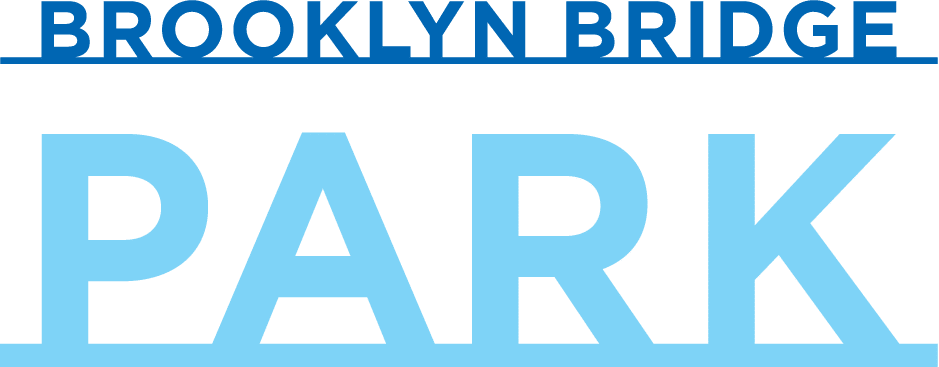by American Planning Association on Jan 22, 2014
Brooklyn Bridge Park (BBP) will receive the American Planning Association’s 2014 National Planning Excellence Award for Urban Design for transforming 1.3 miles of Brooklyn’s formerly inaccessible waterfront into a scenic, multi-use public space.
The Urban Design award honors efforts to create a sense of place, whether a street, public space, neighborhood, or campus effort.
The site of Brooklyn Bridge Park was once a thriving industrial waterfront. In the 1950’s, however, shipping in NYC began a steady decline, while the construction of the Brooklyn-Queens Expressway created an approximately 60-foot-high barrier that isolated the East River waterfront from the community and restricted waterfront access. The Port Authority ceased cargo operations in 1984, and in 2002, Governor George Pataki and Mayor Michael Bloomberg dedicated state and city funding providing for the park’s construction and for the creation of Brooklyn Bridge Park Development Corporation, which eventually became the Brooklyn Bridge Park Corporation – the not for profit entity responsible for the planning, construction, maintenance and operation of Brooklyn Bridge Park.
BBP is the result of extensive community planning and grassroots advocacy lasting more than 20 years. Designed by Michael Van Valkenburgh Associates, Inc., the park was planned with several goals guiding its development, including: returning the waterfront to public use, creating a multi-use civic space, and reconnecting with adjacent neighborhoods. Among the park’s many features are: three activated piers (Pier 1, Pier 5, Pier 6); Jane’s Carousel, a historic and beautifully restored carousel built in 1922; boat ramps; a parkwide greenway; a pebble beach; fishing stations; sand volleyball courts; waterfront promenades; a salt marsh; picnic tables and grills; playgrounds; sports fields; a pop-up pool; and Squibb Park Bridge – a dynamic structure that provides a direct and dramatic entry point to the park from the promenade above.
“Brooklyn Bridge Park has had an undoubtedly transformative effect on the neighborhoods of Brooklyn,” said Ann C. Bagley, FAICP, 2014 APA Awards Jury Chair. “The park has reconnected New Yorkers with the charming East River waterfront, affording visitors a true ‘sense of place.’”
To date, over 38 acres have been built, stretching from Atlantic Avenue in the south up to Jay Street, north of the Manhattan Bridge in DUMBO. Approximately $315MM in city and state funding has thus far been committed to the project. “Since 2009, we have watched a stretch of abandoned piers and uplands below Brooklyn Heights become a world-class park,” said Alexandra Bowie, President of the Brooklyn Heights Association. “Visitors can now walk a shade-dappled path through native plants, picnic on a grass lawn with a view of the Brooklyn Bridge, and take in a performance or lecture sitting on the granite steps facing lower Manhattan.”
The park is host to frequent free public programs for all age groups and includes everything from tai chi for seniors to puppetry workshops for children. Additionally, the Brooklyn Bridge Park Conservancy’s education program (K-12) has served more than 10,000 students from more than 150 schools and institutions since 2008. The program uses the park as a laboratory for hands-on investigation in subjects like ecology and geology, making BBP a truly living classroom.
BBP serves thousands of visitors on any given day, attracting 108,000 people during an average summer weekend. The park has had a profound impact on several of Brooklyn’s most vibrant residential neighborhoods, including the Columbia Street Waterfront Corridor, Brooklyn Heights, and Dumbo. For example, the Columbia Street corridor community has seen increased residential sales as a result of the success of nearby Pier 6.
Future plans for the park include additional calm water zones for non-motorized boating, basketball and handball courts, multi-use lawns, a full size roller skating rink, and a marina. Once complete, BBP will span a total of 85 acres along the East River waterfront, making the project the most significant park development in Brooklyn in more than a century. Brooklyn Bridge Park will receive the 2014 National Planning Excellence Award for Urban Design at APA’s National Planning Conference in Atlanta during a special luncheon on Tuesday, April 29, 2014. The park also will be featured in an upcoming issue of Planning magazine, APA’s flagship publication.
To view all of the APA 2014 National Planning Excellence and Achievement Award recipients, visit www.planning.org/awards/2014. APA’s national awards program, the profession’s highest honor, is a proud tradition established more than 50 years ago to recognize outstanding community plans, planning programs and initiatives, public education efforts, and individuals for their leadership on planning issues.
About American Planning Association
The American Planning Association is an independent, not-for-profit educational organization that provides leadership in the development of vital communities. APA and its professional institute, the American Institute of Certified Planners, are dedicated to advancing the art, science and profession of good planning — physical, economic and social — so as to create communities that offer better choices for where and how people work and live. APA has offices in Washington, D.C., and Chicago, Ill. For more information, visit www.planning.org.

